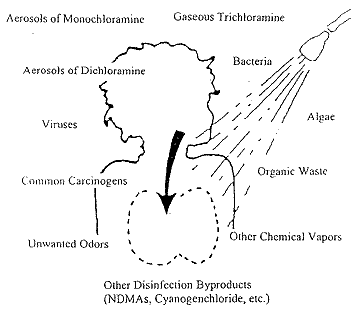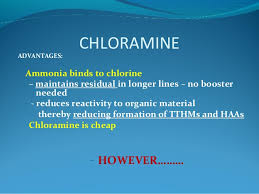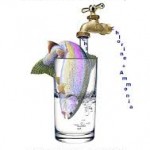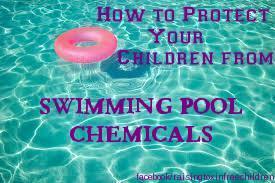The Entire Bay Area uses Chloramine to disinfect water.
We want customers to be safe from this ineffective and toxic additive used by many water utilities. Water contaminated with chloramines should not be ingested nor should it be used to wash any part of the body.
The only carbon that can remove Chloramines is Catalytic Carbon.
City water filter makes use of Catalytic Carbon in Whole House Filtration System to break up and remove Chloramines within
For the most comprehensive and current information about the Chloramine issue, visit Citizens Concerned About Chlorine (CCAC) at chloramine.org
WHAT ARE CHLORAMINES AND WHY BE CONCERNED?
Chloramines cause skin problems, and can overwhelm and toxify the liver.
Chloramine vapors and its disinfection byproducts can accumulate in indoor air and concentrate in an enclosed area such as a shower stall, small bathroom, kitchen, or apartment (see Toxic Showers and Baths )
-
- Chloramine is a combination of chlorine and ammonia used to disinfect water supplies (like the Hetch Hetchy system.) Water utilities often refer to chloramine as monochloramine.
- Catalytic Carbon is the ONLY carbon that can break up & remove Chloramines
- Chloramine is difficult to remove and cannot be removed by boiling, distilling, or by standing uncovered.
- Chloramine is a less effective disinfectant than chlorine. The World Health Organization (WHO) says that “monochloramine is about 2,000 and 100,000 times less effective than free chlorine for the inactivation of E. Coli and rotaviruses, respectively. ”
- Chloramine dissipates slower than chlorine.
- Some disinfection byproducts of chloramine are even more toxic than those of chlorine, i.e. iodoacids.
- Significant corrosion issues costing homeowner expensive repair costs.
- to Learn more: Chloramine Facts
Effects of Chloramine on Human Health
According to the EPA: “Some people who drink water containing chloramine well in excess of the MRDL could experience stomach discomfort or anemia.”
There are limited studies available according to the EPA. They did not have enough information to determine if respiratory, skin, or digestive problems are caused by Chloramine. EPA says it doesn’t know whether chloramine itself is carcinogenic. The agency provides an IRIS doc for chloramine on its website, however, EPA’s IRIS doc for NDMA, a DBP of chloramine, states that it’s a ‘probable human carcinogen.’ In reality, there are more than 600 DBPs of chloramine, and little is known about most of them. EPA scientists are currently studying the unregulated disinfection byproducts that form in water treated with monochloramine.
The problem with establishing the health effects of chloramine in drinking water is limited information. There is primarily anecdotal cause-and-effect evidence: when these people avoid chloraminated water, their symptoms get better, and when they don’t, their symptoms get worse. Since there very limited scientific studies of these health effects, the anecdotal evidence is the best available evidence.
Despite their own admission to limited studies, it’s posted: “EPA believes that available data support the use of monochloramine to protect public health,” on the Q&A page. Using this logic, I could walk into a fast food restaurant look at the menu and not read lettuce. Despite the anecdotal evidence of pictures of lettuce on hamburgers and people eating hamburgers with lettuce in front of me. Seeing salad on the menu and knowing the primary ingredient in salad is lettuce. This rational does not make sense. Even a child would argue against this scenario being true. However, when you take the time to read EPA literature and apply your critical thinking skills this is the logic.
According to reporter Chris Cato in Tap Water: Running the Risk, Chloramines are banned in Tennessee. The news aired on CBS news affiliate WSPA-TV, Anderson-Ashville in November, 2011.
 The following Health Effects have been reported and evidence suggests they were caused by Chloramines.
The following Health Effects have been reported and evidence suggests they were caused by Chloramines.
Immune System Problems
In a study by Zierler, et al, found an increase in deaths from influenza and pneumonia in the communities that used chloramine.
- Chloramine exposure damages lung mucosa, making the lungs more susceptible to allergens and infections.
- Chloramine is a less effective disinfectant and therefore people are exposed to more pathogens. As a result, people with suppressed immune systems are at risk of becoming ill. Those at risk include infants (younger than 6 months), the elderly, chemotherapy patients, organ transplant patients, and others with a weakened immune system such those with HIV or AIDS .
Respiratory Problems
- Chloramine can cause and/or aggravate respiratory problems.
- Chloramine fumes can cause an individual to become congested and cause sneezing, sinus congestion, coughing, choking, wheezing, shortness of breath, and asthma (see the Hazardous Substances Fact Sheet for Chloramine), by the New Jersey Department of Health and Senior Services).
- An increase in asthma due to exposure from chloramine in indoor swimming pool areas was shown in a Belgium study from the Catholic University of Louvain.
- Chloramine damages mucous membranes. The lung damage in those exposed to chloramine in indoor pool air is similar to that seen in regular smokers (see Health24 News article).
- Chloraminated vapor from showers, baths, hot tubs, dishwashers, and other household appliances contains volatilized chemicals that can be inhaled and cause irritation to the respiratory tract.
- Inhaled chloraminated vapor can enter the bloodstream directly through the lungs. It bypasses the digestive tract where the SFPUC says it is broken down and excreted
- The SFPUC says that, “if monochloramine enters the bloodstream directly, it combines with hemoglobin (red blood cells) so it can no longer carry oxygen.”
- The toxic exposure to chemicals (like chloramine) in water is greater from taking a shower than from drinking the same water (see Toxic Showers and Baths).
- An individual can experience long term effects from repeated exposures to a chemical (like chloramine) at levels not high enough to make them immediately sick (see the Hazardous Substances Fact Sheet for Chloramine. The likelihood of becoming sick from a chemical increases with exposure time and concentration
Skin Problems
- Chloramine can aggravate other skin conditions such as eczema and psoriasis.
- Chloramine can cause bleeding lips, dry mouth and dry throat.
- Chloramine can cause burning, red, and dry eyes.
- Skin exposure to ammonia “breaks down cell structural proteins, extracts water from the cells and initiates an inflammatory response, which further damages the surrounding tissues.”
- Chloramine tap water can cause severe skin reactions:
| rashing | dry skin | |
| itching | flaking | |
| welting | blistering | |
| chapping | burning sensation | |
| cracking | scarring | |
| bleeding | pigmentation |
Digestive and Gastric Problems
- Chloramine damages digestive mucosa and can aggravate digestive disorders.
- It is suggested that monochloramine is responsible for gastric cancer. (Journal of Gastroenterology, 1997, “Enhancement by Monochloramine of the Development of Gastric Cancers in Rats; a possible mechanism of Helicobacter, pylori-associated gastric carcinogenesis. Click here
Kidney and Blood Problems
- Persons with liver or kidney disease and those with hereditary urea cycle disorders are at increased risk for ammonia toxicity from the consumption of chloraminated water.
- Kidney dialysis patients cannot use chloraminated water in their dialysis machines because it will cause hemolytic anemia.
Filtration
- To remove chloramine, an extensive carbon filter (to remove the chlorine part of the chloramine molecule) followed by a reverse osmosis or cation filter (to remove the ammonia) is necessary.
- There is NO certified showerhead filter to remove chloramine. The high flow rate and large volume of water passing through a shower head renders the shower head filter useless.
- Sink water filters for chloramine handle low flow, cold water conditions only.
Want to Do More?
-
Join Citizens Concerned About Chloramine (CCAC). Help in the fight to remove chloramine from our water.
- Report symptoms your local health department!
- Write letters to the Editor of the local Newspaper.


 Fish Can’t Live!
Fish Can’t Live!